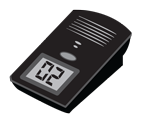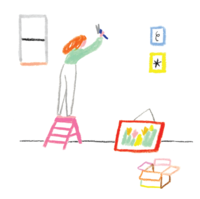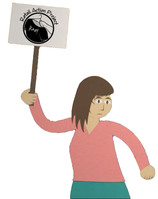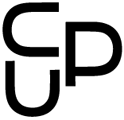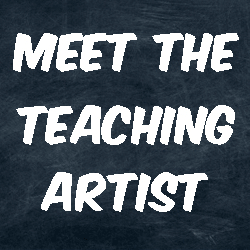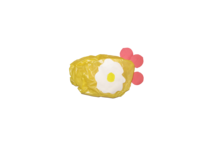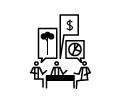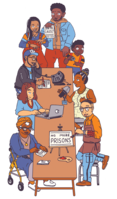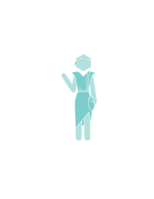How would you describe your artistic and design practice?
Trained as an architect and urban planner, my work evolved from being interested in the built environment towards the forces that shape it, most notably the importance of empowering individuals and communities to transform it. I move in between the architecture, industrial, and graphic design fields in projects that blur the lines between art, design, and civic engagement.
How have you collaborated with CUP before?
I was part of CUP’s teaching artist fellowship in 2018, and since then, I have participated in two City Studies. In 2019, students from the Comprehensive Model School 327 and I co-created Snack Attack, which explores healthy food in public schools. In 2020 I participated with seven other artists and designers to create videos that helped students create art activities at home focusing on topics such as identity, empathy, and the future of our neighborhoods.
How did collaborating with CUP impact your work moving forward? What are some takeaways from your collaborations with CUP?
I had admired CUP for many years before collaborating with them, so I guess it had influenced my practice even before starting to work on City Studies. I have always appreciated how they use design to translate complex information into engaging topics that inspire communities to explore how they can influence what is happening in the city. However, after having first-hand experience implementing CUP’s methodology, I reframed how I was designing my workshops to create exercises that could be easier to implement and at the same time encourage students to question their assumptions. I also enjoy the co-creation process with the students and would like to do the same for larger projects.
What was it like working on a project remotely? What advice would you give other Teaching Artists and Designers about collaborating remotely?
I have been working on projects remotely for the past ten years, so it felt familiar in terms of design or teamwork. However, working with students remotely can be pretty challenging. We must understand that not being all in the same space can create unequal circumstances for those attending the class. As teaching artists, we need to be sensitive and carefully balance eagerness to have everyone participate and understand the limitations that may prevent someone from engaging thoroughly. These may go from access to materials we assume are available in their home to access to a camera, their family, or work situation.
What is a project you’re working on now – outside of CUP – that you’re excited to reveal soon?
I have been working with my team to design the branding and other communication materials of an initiative that focuses on transforming our economy from extractive to regenerative and power self-determination in Black, Indigenous, and people of color (BIPOC) communities. This project has been challenging because we moved away from anything we had done before and are focused on creating something that represents us and the world we envision. I can’t wait for this project to launch since it has also served as an inspiration for other projects that will focus on addressing design in and for BIPOC communities.
You can learn more about Susana and see more of her work at her website and her instagram.
